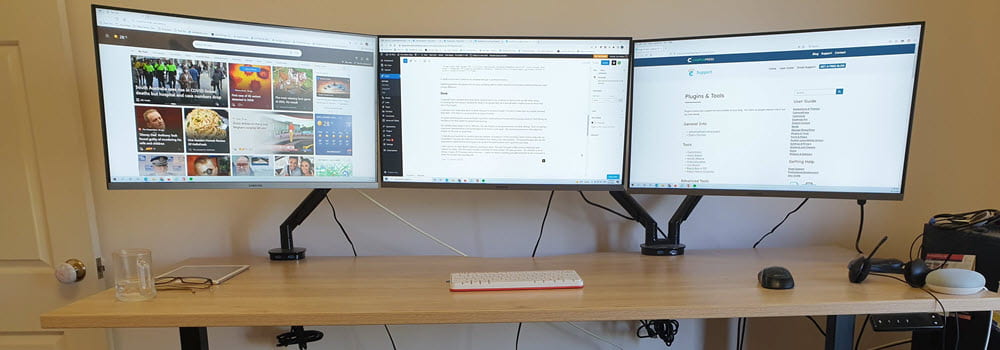This week I will be doing a series of posts on the use of mobile technology in education.
So being the first post – I decided to start off with probably the most thought provoking… the Ultra-Mobile PC (commonly termed UMPC)… and show you a school in the UK that has set up a wireless network to handle the 245 UMPCs they have purchased for their students.
What is a UMPC?
For those that have never heard of a UMPC they are 7 inch or smaller PC (=similar size to a portable DVD player) with a touch screen that you can write on with a special stylus. Unlike PDAs (i.e. Pocket PCs and Palm Pilots) a UMPC runs standard Windows operating system which means you can run Office applications on them i.e. Word, Excel, PowerPoint and OneNote (used for writing on a touch screen when using a Tablet PC). The first UMPCs were sold in early 2006.

Why the School Choose UMPCs?
Each student at Islay High School in the UK will be provided with a Samsung Q1b UMPC (40 G hard drive), with solid carry case/keyboard, head phones, two batteries and access to webcam [Image by Josh Bancroft].
Check out this photo if you want to see a cool size comparison to a DVD.
- They want to shift their perspective from paper with some electronic based material to electronic based material with some paper
- Instead of paper based handouts – notes will be held on a server where each student can access them when required
- Using a wireless data projector they are able to wirelessly display what is on 16 student’s UMPCs onto the board at the front of the classroom
They believe the UMPC is simply a conduit which allows a greater range of learning styles to be catered for across the curriculum.
Check out this great video by Andrew Brown where Ian Stuart from Islay High School demonstrates their UMPCs and discusses how they will be used at his school.
Challenges with using UMPCs
When the UMPCs were first released they did not sell well – very expensive, had poor battery life (~3 hrs), slow processing speed and some had issues with crashing from overheating. To decrease the size/weight of a computer – your aim is to make it more mobile – means compromises have to be made.
However the Samsung Q1b UMPC does well with battery life (Ian Stuart says at 70 % screen setting 7 hrs, at 50 % screen setting 9 hrs). Cost wise it sells for $1,650 in Australia.
Check out this great review on the Samsung Q1b UMPC.
What are your thoughts on the use of UMPCs with students?
- Would cost of each device and possible damage by students be a barrier?
- Will the operating speed of the Samsung Q1b UMPC be adequate enough for the students?
- What are you thoughts/concerns on replacing handouts and text books with electronic versions?
- If you were going to move to wireless network and electronic based material – would you have chosen the UMPC?




Leave a comment